Our Diversity & Inclusion
ESDO Diversity & Inclusion
Indicators & Progress
One of ESDO’s three priorities is intersectionality in everything we do. As a result, we measure ourselves against key standards. While proud of our progress to date, by measuring our progress we can see where we still need to improve.
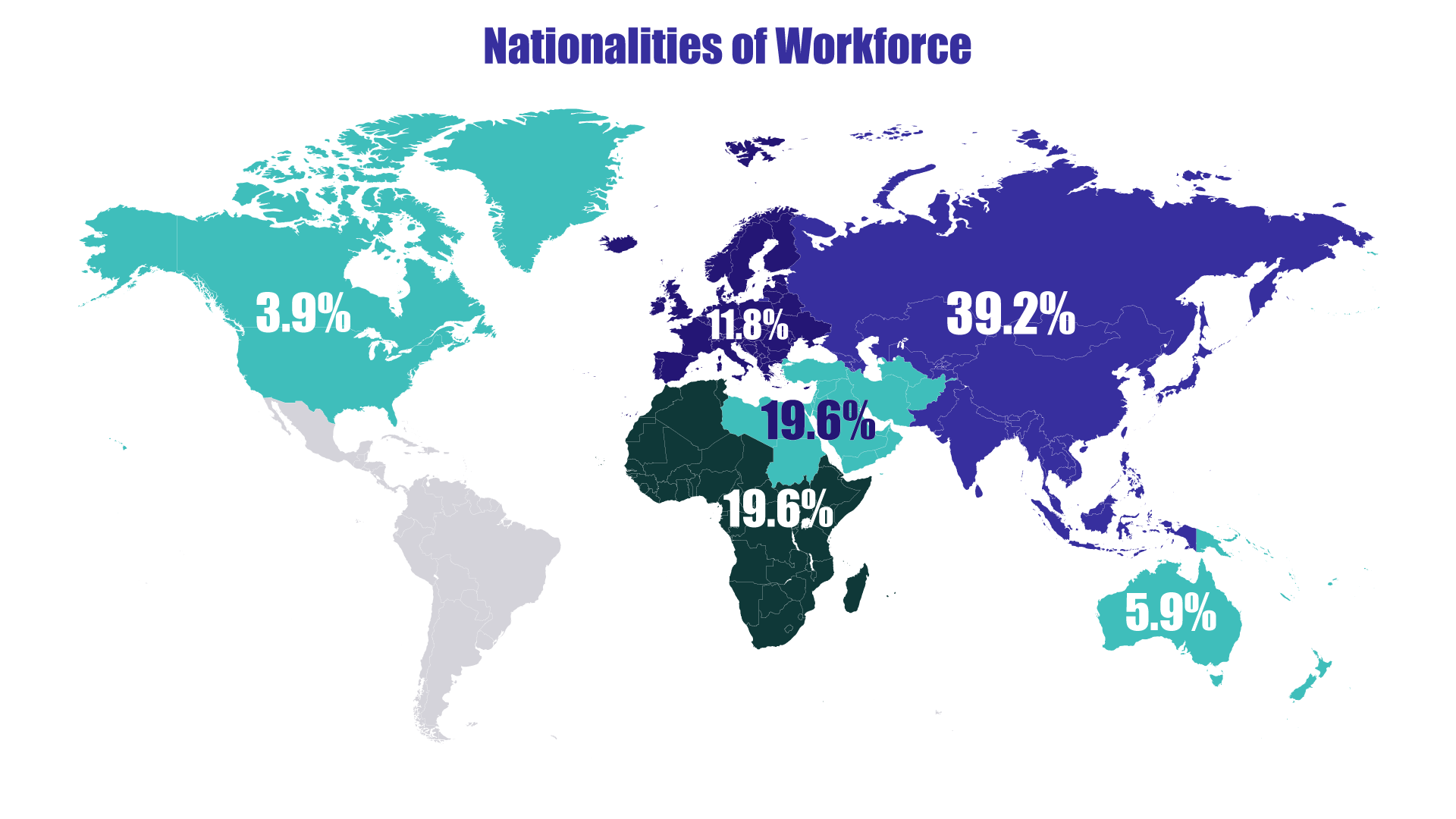
Our workforce mostly represents the places we work and shows our commitment to localisation and empowering our teams to achieve impact in their own communities. Our largest teams are currently in Afghanistan, Syria, Iraq, Ethiopia, Sudan and South Sudan.
Our team members from Europe, Oceania and north America mostly provide specialised technical expertise in sub categories of our services – highly specialised areas.
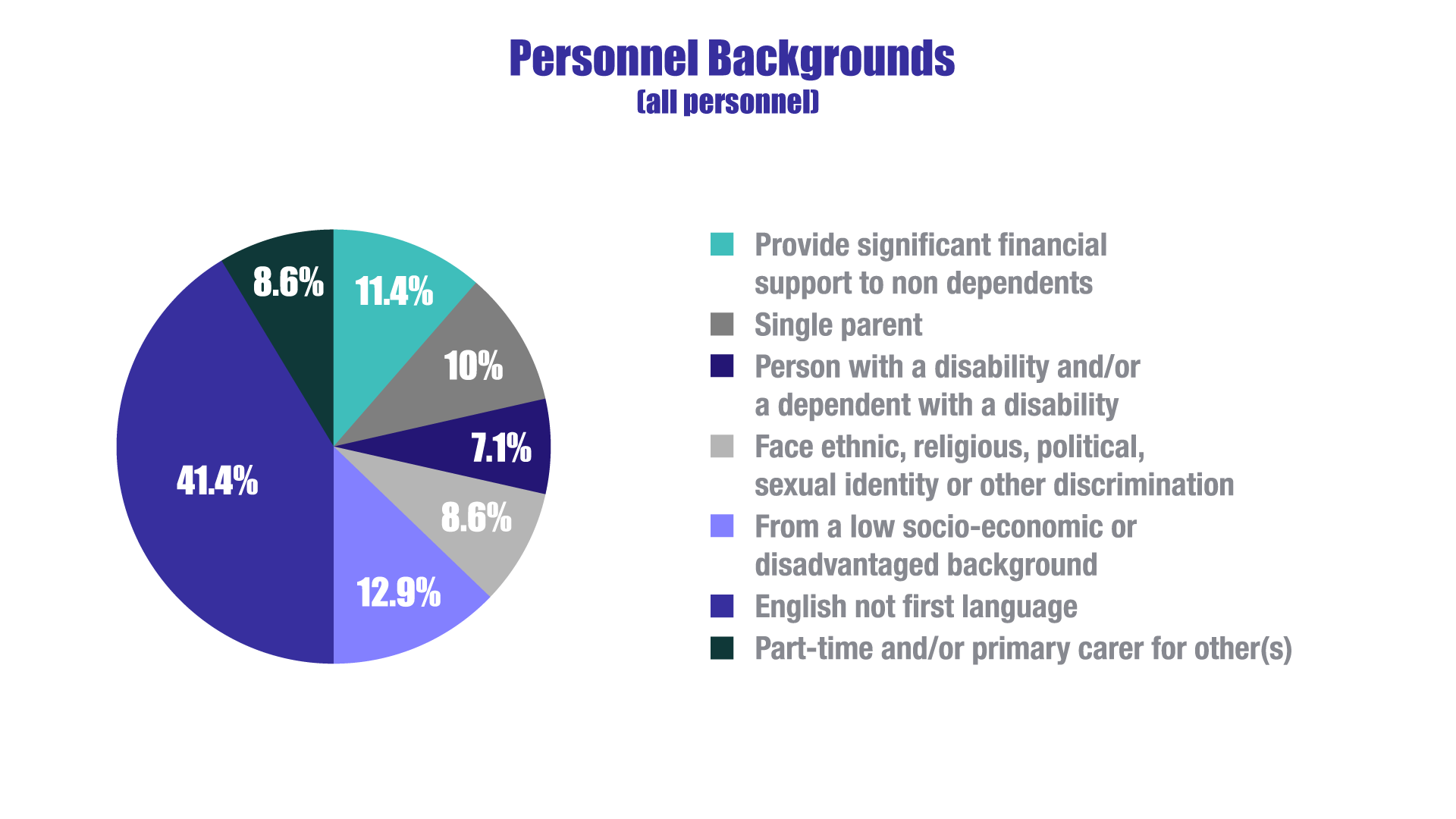
Our workforce is a diverse group and mirrors the people in the world we seek to serve. Some of the diversity indicators we track across our workforce include the challenges and disadvantages each of us face in life. We are primary carers, single parents, people with disabilities and many of us face discrimination in our daily lives – just like the people we aim to serve.
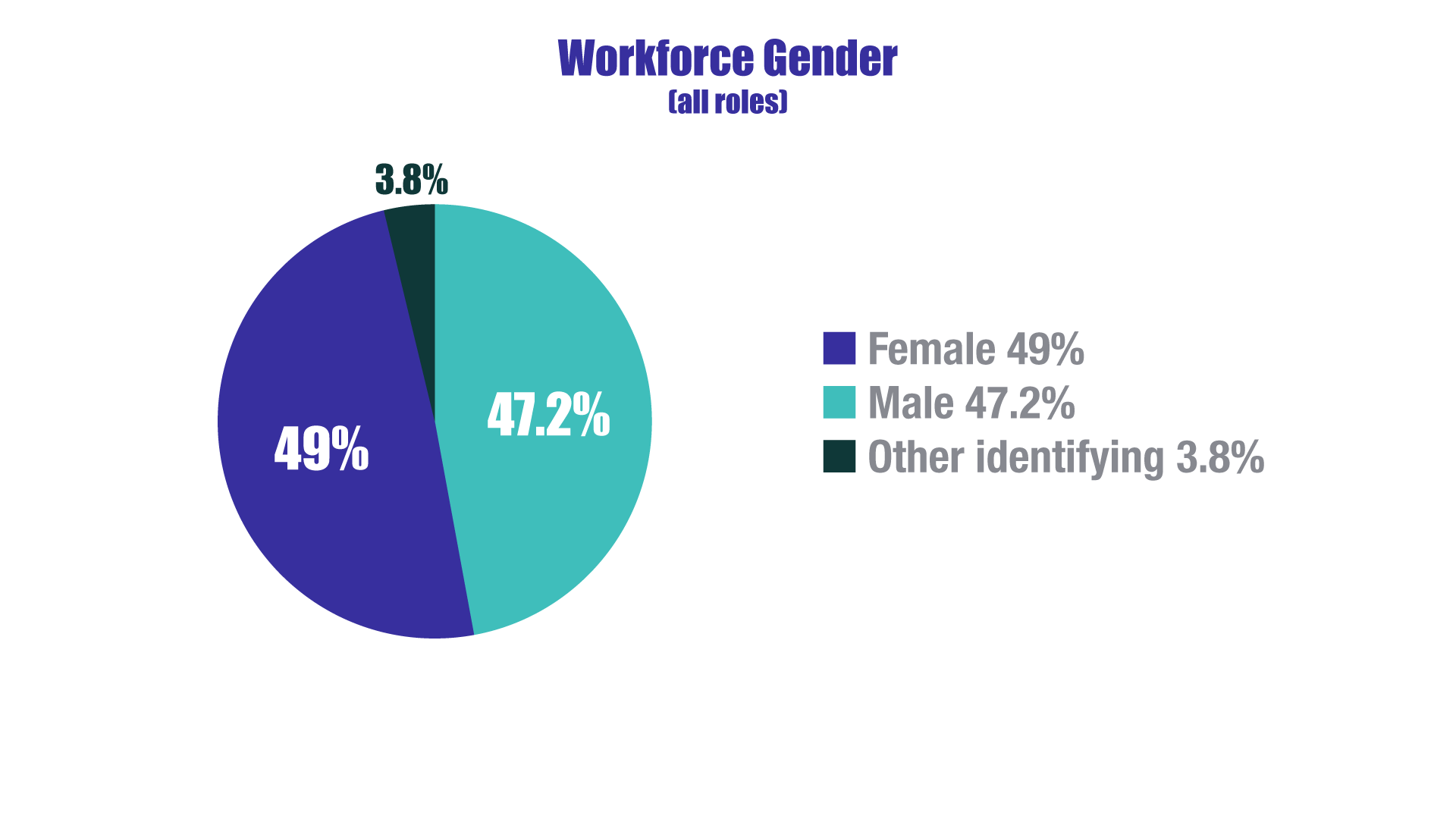
The gender balance of our workforce closely reflects the population at large and we’re proud to maintain this balance.

ESDO also tracks gender at different levels of seniority. We will always aim to ensure gender balance at all levels of the organisation. We cannot claim to work for, understand and serve the populations we care about without our decision makers at all levels representing the genders of those people.
The gender balance of senior executive leaders is of particular importance to us and we will continue to ensure we are balanced at this level.
The gender balance at mid and lower levels of seniority are less balanced at each level but are overall balanced when combined.
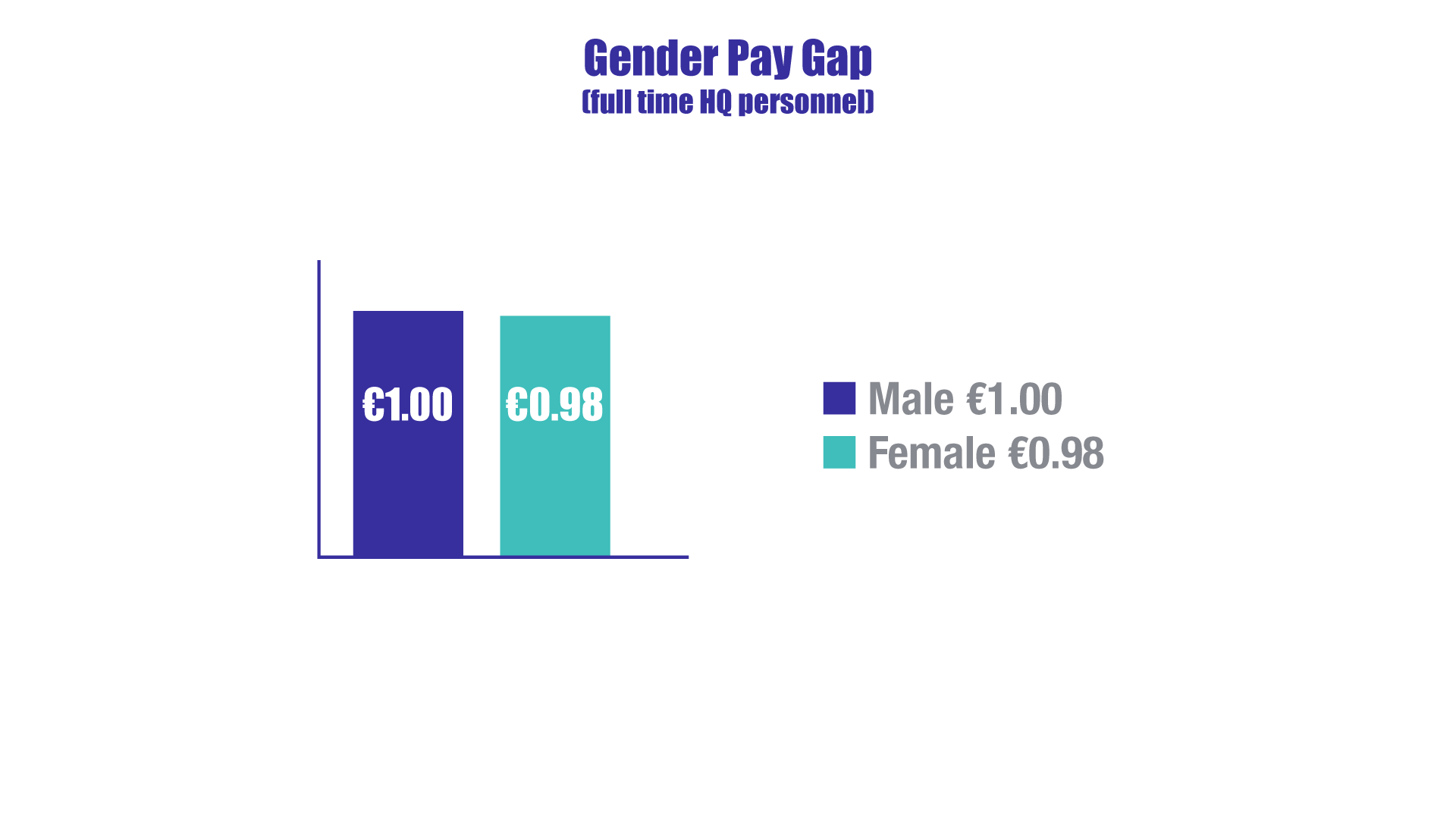
We measure the gender pay gap at ESDO through our full time, permanent HQ personnel because this provides consistent data to compare between years and because it controls for project-specific increases and decreases in our workforce that would distort data month-to-month. Our gender pay gap analyses the average income by gender (all male salaries are summed and then divided by the number of males, with the same calculation repeated for females).
ESDO’s gender pay gap is 0.02 (2 Euro cents). That means that for every one euro earned by males, females at ESDO will earn 98 euro cents.
This is a very low gender pay gap compared to our peers. But we think we can still do better on this and will work to create the opportunities to close this gap to zero in the next two years.
© European Sustainable Development Organisation, Ireland

